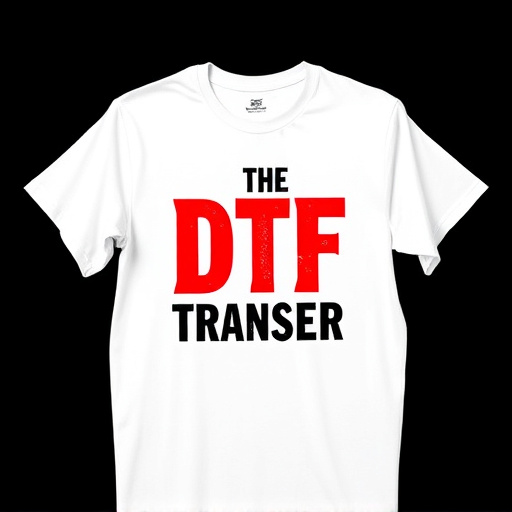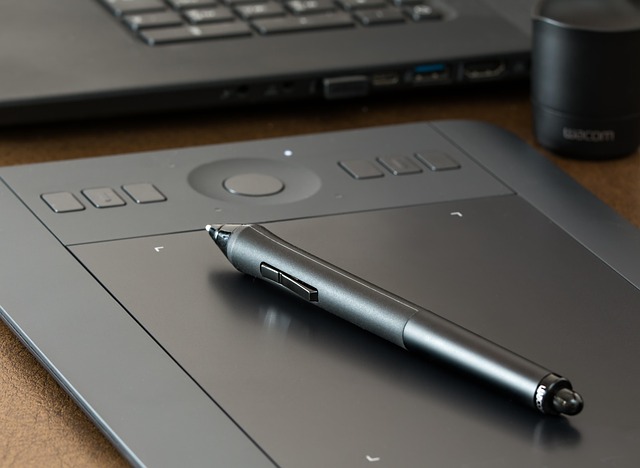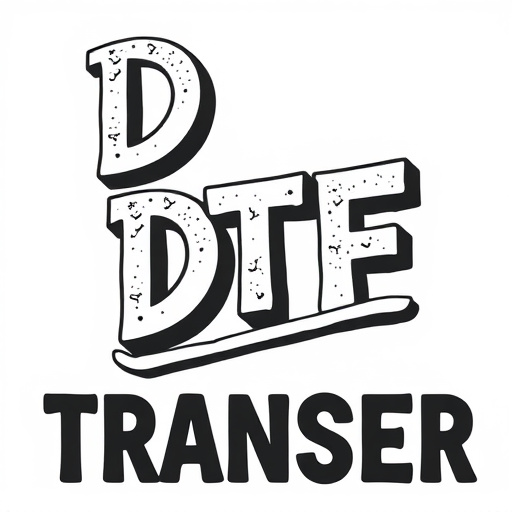Direct to Film (DTF) technology revolutionizes printing by offering unparalleled precision in reproducing intricate designs and thin lines on diverse surfaces. With DTF, industries like sign-making, graphic design, and jewelry production achieve flawless accuracy, durability, and vibrancy. Key factors for high-fidelity DTF prints include the quality of the transfer method, fabric choice, and selecting specialized DTF films. The process involves vectorizing designs, choosing the right film, printing ink onto the film to create a negative mask, exposing it, developing it into a stencil, aligning and pressing the film onto substrates, and curing the inks. DTF's versatility benefits manufacturing with microcircuit masks and fashion design with customizable, high-resolution apparel.
In today’s world of precision printing, the ability to reproduce thin lines and intricate details is paramount. DTF (Direct To Film) transfer technology emerges as a game-changer, offering unparalleled accuracy and versatility for creating DTF prints. This article explores the wonders of DTF transfers, from understanding the core technology to selecting the right materials and mastering the print process. We delve into real-world applications, showcasing how DTF prints are revolutionizing various industries with their exceptional detail reproduction capabilities.
- Understanding DTF Transfer Technology
- Advantages of Using DTF for Thin Line Reproductions
- Essential Factors in Achieving Accurate Details
- Choosing the Right DTF Transfer Material
- Step-by-Step Guide to DTF Printing Process
- Real-World Applications and Success Stories
Understanding DTF Transfer Technology

The DTF (Direct to Film) transfer technology is revolutionizing the way intricate designs and fine lines are replicated on various surfaces. This innovative process eliminates traditional printing limitations, enabling the creation of precise, high-quality prints with remarkable detail. By exposing a film mask directly to UV light, DTF allows for the accurate reproduction of thin lines, making it an ideal choice for sectors demanding precision and sophistication.
DTF Printing offers unparalleled control over line thickness, ensuring every minute detail is captured flawlessly. This technology is particularly prized in industries such as sign-making, graphic design, and even jewelry production, where the representation of fine elements is crucial. DTF prints boast exceptional durability and vibrancy, ensuring that intricate designs maintain their integrity for extended periods.
Advantages of Using DTF for Thin Line Reproductions

Using DTF (Direct to Film) for thin line reproductions offers several advantages that make it a preferred method in various industries. Firstly, DTF transfers are highly accurate and precise, allowing for the reproduction of intricate details and delicate lines with remarkable clarity. This is particularly beneficial when creating designs that require fine lines such as technical drawings, circuit boards, or even artwork with minute specifics. The technology ensures that every thin line is accurately captured and transferred to the final print medium.
Additionally, DTF printing provides a level of flexibility in terms of material choices. It can be used on a wide range of surfaces, from paper to plastics and metals, enabling designers and manufacturers to choose the most suitable substrate for their specific application. This versatility ensures that intricate thin line prints can be achieved across diverse projects without compromising on quality or detail.
Essential Factors in Achieving Accurate Details

Achieving accurate reproduction of thin lines and intricate details in transfers is a precise art that relies on several key factors. One of the primary considerations is the quality of the DTF (Direct to Fabric) transfer method used. DTF Printing offers exceptional precision, allowing for the capture of even the most subtle linework and textural elements. The process involves transferring ink directly onto the fabric surface, ensuring a crisp and detailed print.
Additionally, the choice of fabric plays a significant role in the outcome. Different fabrics have varying levels of absorbency and porosity, impacting the final print quality. For intricate designs with fine lines, a smooth, tightly woven fabric is ideal as it minimizes ink bleed and allows for greater control during the printing process. Moreover, expert technicians should calibrate the printing equipment precisely to achieve consistent results, ensuring that each DTF print lives up to its potential to reproduce complex details flawlessly.
Choosing the Right DTF Transfer Material

When selecting a DTF (Direct to Fabric) transfer material, precision and detail reproduction are paramount, especially for designs featuring thin lines. Opting for high-quality DTF films designed specifically for intricate patterns ensures optimal results. These specialized materials offer excellent resolution, enabling the precise replication of fine details, from delicate outlines to complex patterns.
The right DTF film should be known for its consistent performance across various fabrics and printing methods. Its flexibility allows it to adhere securely while maintaining its structural integrity during the transfer process. Additionally, looking for a material with good moisture resistance ensures that the ink remains intact and doesn’t smudge or wash away, especially when printing on absorbent fabrics. This attention to material choice significantly enhances the overall quality of DTF prints, ensuring they meet the high standards required for detailed designs.
Step-by-Step Guide to DTF Printing Process

The Direct to Film (DTF) printing process offers a precise and efficient method for creating intricate prints with thin lines and delicate details. Here’s a step-by-step guide to help you navigate this advanced technique:
1. Design Preparation: Start by designing or selecting artwork suitable for DTF. Ensure the image has clean, sharp lines and minimal noise. Convert the design to a vector format if possible, as this will guarantee optimal clarity in the final print. Adjust color modes and resolutions according to your printer’s requirements.
2. Film Selection: Choose a high-quality DTF film that aligns with your project’s needs. Different films offer various characteristics like durability, gloss, and opacity. Consider factors such as the type of ink you’ll be using (water-based or solvent) and the desired finish of the print.
3. Printer Setup: Load your DTF film into the designated slot on your printer. Calibrate the printer settings, including resolution and color profiles, to match the specifications of your design. Ensure the printing area is clean and free from dust or debris for optimal adhesion.
4. Printing Process: Initiate the print job. The printer will precisely lay down ink onto the film, creating a negative mask of your design. This process ensures that areas intended for ink will be protected, while unprinted sections will be exposed to light, allowing them to become transfer-ready.
5. Exposure and Development: After printing, expose the film to specific light conditions as per the manufacturer’s instructions. This step hardens the exposed areas of the film, creating a negative stencil. Then, submerge the film in a developing solution to remove the unexposed areas, leaving only the desired design intact.
6. Application: Position the printed film carefully onto the substrate (e.g., t-shirt, wood, or canvas). Ensure alignment is precise. Use a heat press or iron to transfer the ink from the film onto the target material, following the recommended temperature and pressure settings for your specific DTF transfer.
7. Curing: After the transfer, allow the printed area to cool down. For water-based inks, air drying is sufficient. For solvent inks, additional curing time with heat or a cure lamp might be necessary to achieve complete solidification.
Real-World Applications and Success Stories

In various industries, the ability to reproduce thin lines and intricate details accurately is paramount. This is where DTF (Direct to Film) Transfers shine. These advanced printing techniques have found real-world applications across multiple sectors, from manufacturing and automotive to fashion and signage. For instance, in manufacturing, DTF Printing enables the creation of precise, high-resolution masks for photolithography, crucial for producing microcircuits with minimal errors.
Success stories abound, particularly in the realm of DTF Transfers for apparel and accessories. Brands have leveraged this technology to achieve intricate design details that were once impossible or cost-prohibitive with traditional printing methods. The result is a vibrant array of DTF Prints adorning everything from high-end clothing to custom phone cases. This level of detail not only enhances visual appeal but also allows for greater customization, catering to the diverse preferences of modern consumers.














